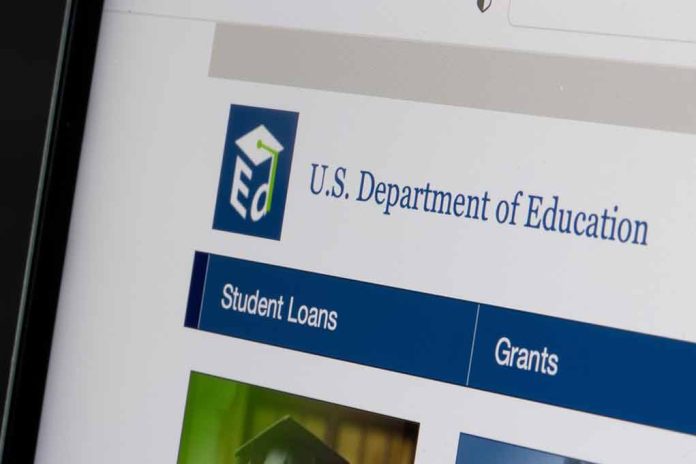
Student loan collections will resume next month, with millions of borrowers in default facing wage garnishment, tax refund interception, and other harsh collection measures after years of pandemic-related pauses.
Key Takeaways
- The Department of Education will resume collections on defaulted student loans on May 5, 2025, affecting approximately 5.3 million borrowers currently in default.
- Collections tactics will include withholding tax refunds and Social Security benefits, with wage garnishment starting later in the summer after a 30-day notice.
- Only 38% of federal student loan borrowers are currently making payments, with the Education Department warning nearly 10 million borrowers could soon be in default.
- Education Secretary Linda McMahon stated taxpayers “will no longer be forced to serve as collateral for irresponsible student loan policies.”
- Borrowers in default can potentially avoid collections through loan rehabilitation, which requires making nine consecutive on-time payments.
Federal Collections Machinery Reactivates After Four-Year Pause
The Department of Education announced it will restart collections on defaulted federal student loans beginning May 5, affecting approximately 5.3 million borrowers who haven’t made payments in years. This marks the end of collection suspensions that began in March 2020 under the Trump administration as part of COVID-19 relief measures and were extended multiple times by the Biden administration. The Education Department’s decision represents a significant shift in federal student loan policy under the Trump administration’s second term, emphasizing what officials describe as responsible management of the federal loan portfolio.
Education Secretary Linda McMahon made the administration’s position clear in her announcement of the resumption. “American taxpayers will no longer be forced to serve as collateral for irresponsible student loan policies,” McMahon stated. The department further noted that only 38% of borrowers are currently making payments on their student loans, creating significant fiscal concerns. Officials project that nearly 10 million borrowers—representing almost a quarter of the federal student loan portfolio—could soon be in default.
Currently, roughly 5.3 million borrowers are in default on their federal student loans.
https://t.co/lClHSbMAok— WCPO 9 (@WCPO) April 22, 2025
Collection Methods and Borrower Impact
When collections resume, the government will employ several powerful tools to recover defaulted student loan debt. The Treasury Department’s offset program will begin immediately withholding government payments from those with past-due debts, including tax refunds and Social Security benefits. Wage garnishment will follow later in the summer after borrowers receive a mandatory 30-day notice. These collection methods can seize up to 15% of a borrower’s disposable income without requiring a court order, making them particularly potent tools for debt recovery.
“This is cruel, unnecessary and will further fan the flames of economic chaos for working families across this country,” Mike Pierce, executive director of the Student Borrower Protection Center, said in a statement.
Many borrowers already face challenges navigating the complex student loan system. Recent layoffs at the Federal Student Aid office have made it increasingly difficult for borrowers to access assistance. The Education Department says it plans to clear a backlog of 1.8 million pending income-driven repayment applications and will extend call center hours to provide additional borrower support.
Options for Borrowers in Default
For borrowers facing imminent collections, loan rehabilitation offers a potential path back to good standing. This process requires making nine consecutive on-time payments based on income to restore loans to normal status. Successfully completing rehabilitation removes the default from a borrower’s credit history, though late payments leading to the default remain on record. The Education Department has stated it will implement a “robust communication strategy” to inform borrowers of their options, including income-driven repayment plans that can significantly reduce monthly payment amounts.
“We think that the federal student loan portfolio is headed toward a fiscal cliff if we don’t start repayment and collections,” a senior department official stated.
Secretary McMahon also criticized higher education institutions for their role in the student debt crisis, saying, “Colleges and universities call themselves nonprofits, but for years they have profited massively off the federal subsidy of loans, hiking tuition and piling up multibillion-dollar endowments while students graduate six figures in the red.” The department has expressed plans to work with Congress to make loan payments more affordable and reduce college costs, though specific legislative proposals have not yet been detailed.









